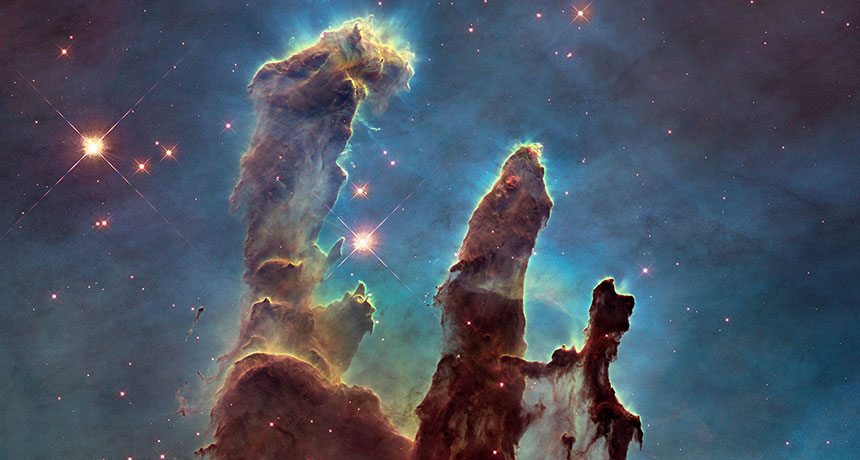
PILLAR OF STRENGTH Columns of cosmic gas and dust dubbed the Pillars of Creation (shown in this image from the Hubble Space Telescope) may be propped up by an internal magnetic field.
NASA, ESA, Hubble Heritage Team/STScI and AURA

PILLAR OF STRENGTH Columns of cosmic gas and dust dubbed the Pillars of Creation (shown in this image from the Hubble Space Telescope) may be propped up by an internal magnetic field.
NASA, ESA, Hubble Heritage Team/STScI and AURA